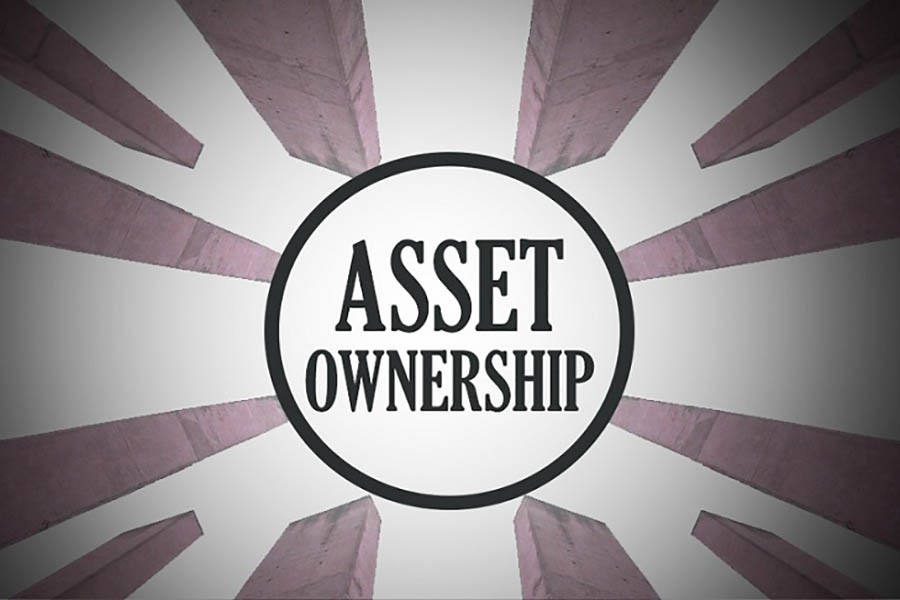
Published :
Updated :

Compared with the value of assets he/she owned 18 years back, an adult Bangladeshi, on an average, is now richer by US$1194.
The value of per capita assets in Bangladesh, according to the Global Wealth Report-2018 of Credit Suisse, a renowned Swiss bank and financial institution, was US$1138 in 2000 and it has increased to US$2332 in 2018. The value of per capita liquid assets is $921 and that of other assets $1531.
The report does reveal a few startling information about the assets owned by Bangladeshis and peoples of many other countries. According to the report, the value of assets, liquid and others, of 97.2 per cent of Bangladeshis is below US$10,000 and that of another 2.7 per cent is between US$ 10,000 and US$100,000. Only 0.1 per cent people own assets between US$0.1 million and US$1.0 million each.
However, there should be no reason to treat the Credit Suisse's report as authentic in the case or Bangladesh, for a substantial part of wealth owned by the people of this country is not reflected in national account. They have a strong propensity to hide information about their wealth. Besides, there is no way of knowing about the hidden wealth or funds transferred abroad. That a large volume of fund is transferred abroad annually by a section of rich people has been confirmed by the Global Integrity Report on a number of occasions in the recent past.
Yet the estimates presented in the report highlight once again the deepening inequality in ownership of assets. More than 97 per cent people own assets worth US$10,000 each and only 2.8 per cent have assets above that mark. Such an inequality in asset ownership is directly linked to income inequality.
The pattern of asset ownership by Bangladeshis reveals one particular trait - that the people are more interested in owning land, gold and other fixed assets than investing funds in stocks, bonds and other securities or keeping money with banks.
The increase in the ownership of liquid assets in Bangladesh, according to the Swiss bank report, was 121 per cent between 2000 and 2018 while it was 361 per cent in the case of non-liquid assets during the same period.
The situation is altogether opposite in neighbouring India where people invest funds in higher volume in stocks and other financial instruments and keep more money with banks. The rate of increase in liquid assets in that country during the period under review is 1098 per cent.
The ownership pattern as depicted in the Credit Suisse's report does indicate that the Bangladeshis do not have much faith in the country's financial sector, including the capital market.
The country has banks and financial institutions more than its requirement. The government of the day has digested enough of criticism for giving their own party people the permission to open new banks and non-banking financial institutions. But the banks, in general, have failed to motivate the majority of population to keep funds with them. Rather, a number of banks, old and new, are now deeply troubled by loan scams and capital shortage.
Such scams have only eroded further the confidence of the savers in banking institutions. Under the prevailing circumstances, the savers should have gone for investment in the capital market. But, on that account also, the situation is not favourable. A couple of collapses of the market, engineered by the manipulators of all sorts, has been responsible for declining faith in the country's stock market. Revival of the market in the near future is very much unlikely.
Thus, the dream of the policymakers to arrange long-term financing for projects and enterprises, manufacturing or otherwise, from the stock market will continue to remain elusive. The capital market is dominated by the vested quarters to such an extent that it would be impossible to carry out any major reform that the market needs so badly.
People in general love to invest in land which they consider more precious than gold in a country with one of the lowest land-man ratio. Every family, be it a rich or low-income one, is found eager to invest in land because its price has been appreciating unabatedly. The topmost priority even of a migrant Bangladeshi worker is buying a piece of land or a flat.
The country's financial sector remains malnourished because people are not willing to put in their funds. They lack confidence in it and the rate of return on investments is poor. The national savings scheme that offers attractive return is one exception. In this case, the government ensures better return at the cost of the taxpayers.
If the key players, including banks and stock markets, in the financial sector could pay higher return to investors, the volume of liquid assets would have been far greater than non-liquid assets in Bangladesh also. Such a development is all the more necessary for the sake of a vibrant financial sector.


 For all latest news, follow The Financial Express Google News channel.
For all latest news, follow The Financial Express Google News channel.